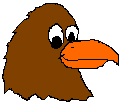Contour Drawing
Goal:
The
student will contour draw using the "blind" and "regular" method a
picture of some real object, either their own hand, seed pod and or
shoe.
Materials:
Paper Pencil
Seed Pods
Old Shoes
Steps:
-
Draw by closing your mind to
the regular way of seeing and draw by "feel". Pretend that
your eyes are attached to an ant that is slowly walking along the
edge of the subject. Whenever there is a part that is
interesting, such as a shadow, an edge, a line or whatever, your
eyes will follow it. You are not allow to EVER look at your
drawing, really, you may not look. The idea is to teach your
mind how to trust your eyes and Not to expect to look back and
forth.
Now, the important thing you are learning at this stage is to link
your eye muscles to your hand and finger muscles. It is that
simple, but it takes time and practice, practice, and more
practice to improve. When a person draws in this manner they
are doing BLIND contour drawing.
Since you never look at your drawing, you will never need to
erase, or even worry about erasing. Were you to erase you
would kill the drawing. Really. This type of art work
depends on original lines. So feel where the "important"
ones are, push a bit harder. Lighten up on the "unimportant"
ones. Once you look at the drawing, it is over! 'Tis
finished. That's it. You may NOT begin anew on it.
Feel free to start a NEW drawing, but not on this one again.
-
The best subjects to practice
on are organic ones. Ones that if a mistake is made won't be
easily seen. Human-made items are too "perfect" and an
out-of-place line will show up like a sore thumb! Imagine
what a pencil would look like draw with a curved line for its
side, that will not do. So practice on crumpled paper,
twigs, crushed aluminum cans, old towels, and shoes? Just
about any free form item with no "expected" lines. Practice
whenever you can for it only takes 30 seconds to a few min.
Practice this skill whenever and wherever for the rest of your
life and you will improve and keep on top of your skills.
-
The fun part now begins when
you take the "blind" skills learned and incorporate them with
being able to look at the drawing whenever you want! The
skills are the same as with the ant and any line or edge to
follow, you just get to look at your paper whenever you wish.
How nice! The key here is that you may also never re-draw or
erase. Remember that the vitality of your original pencil
line is what makes your artwork alive. To re-draw it kills it, so
don't.
-
Paying close attention to how
important a line, an edge, a shadow or whatever your eye latches
onto is and translating that importance to how hard your pencil is
pressed to the paper is your major goal once you've learned how to
trust your eye and hand coordination. Once again, the name
of the game here is to practice, practice and practice some more.
"Practice makes
Progress". Memorize this "new"
phrase, for you will get farther with teaching yourself to succeed
when you acknowledge that there is a possibility for progress.
back to top
|
